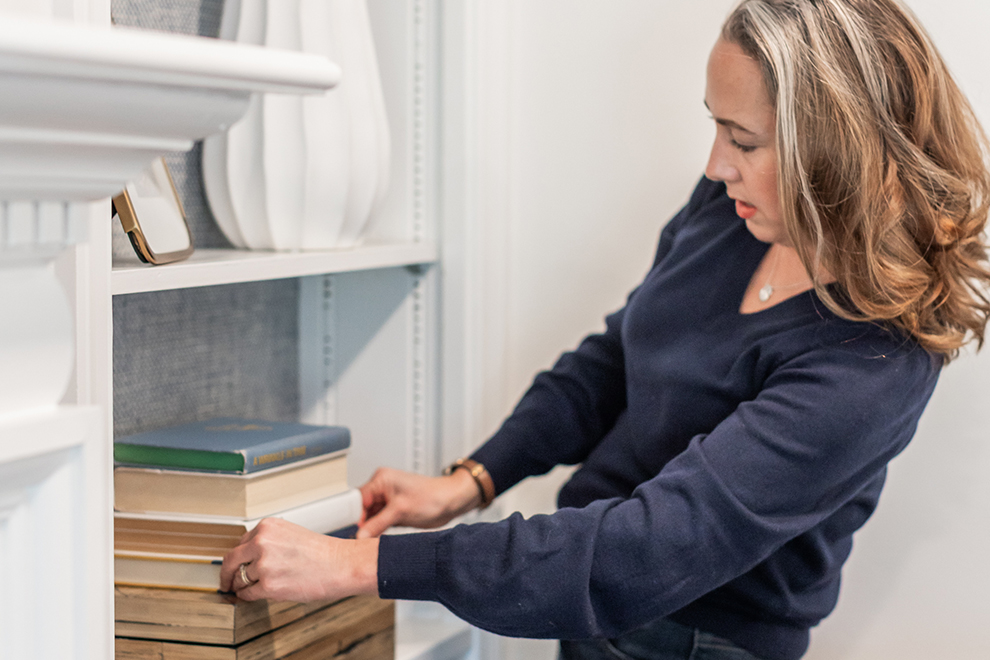We send our kids off to school with great intentions, but most of us can attest to the fact that homework can get out of control fast. School supplies scattered all over the house, lost papers, late assignments, the poster board shopping run at ten o’clock. If you dread such homework headaches and want your children to have a more positive education experience, here are a few ideas to help get things on track.
Part 1
Create a distraction-free study area at home.
A clean and organized place to work, read, and study at home can help your students focus and follow through on academics.
• Designate a desk or table for homework. It should have adequate light in a quiet area that isn’t too isolated from the rest of the household. Note: Some students may need background noise to concentrate. It’s okay to experiment to find what works best.
• Keep basics like books, pencils and pens, paper, and a calculator nearby to prevent students from getting sidetracked while hunting down supplies.
• Eliminate distracting clutter, which increases the likelihood that important papers will get lost in the shuffle.
• Try this feng shui tip: Position the desk to face the main entrance to the room, with a solid wall behind. This set-up calms the central nervous system and improves focus. When I did this, my son sat down to work on a history project that wasn’t due for weeks. He was so focused, he finished that evening and turned it in the next day. He got an A and claimed the coveted “Most Improved in History” award that year. (Please note: Results may vary!)
Part 2
Fortify the home-to-school connection.
A few weeks into first grade, my son came home with a note from the teacher saying that he never turned in his homework. This was a surprise! I had checked it every night. He had a homework folder with each pocket labeled: left was “Take Home” and right was “Turn In.” Foolproof, right? Turns out he always put his finished homework in the left pocket, so it went to and from school without the teacher ever seeing it. Lesson learned: Once you put a system in place, make sure your student understands how to use it. Consider these:
• Set up a drop zone for school bags and in-season outerwear. Everything gets returned to this zone at the end of each day so it’s ready to go in the morning.
• Designate folders and bags for specific days and activities. Help kids remember to put their completed assignments in the correct folder, not loose in the bag.
• Combine the drop zone and bags to make a system. We have five hooks labeled Monday through Friday with the corresponding activities written on chalk labels. The bags (labeled soccer, dance, A and B day, etc.) are refreshed over the weekend, put on their respective hooks, and returned to the next appropriate hook each evening.
• Designate one notebook to write down all assignments. If students are allowed to use technology in the classroom, they can also ask permission to take a picture of the assignment board at the end of each class.
• As your children get older, have them use a planner or calendar app to record all assignments and due dates, and set reminders.
• With your student, create a 3-ring binder or folder at the beginning of the year to collect all of the log-on passwords, syllabi, contact lists, and other paperwork that will help both parents and students keep track of progress and assignments. Store it in a central place where everyone can find it when needed.
• Encourage your children to go through folders and binders regularly and recycle or file papers that are no longer necessary.
Part 3
Establish a routine and stick with it.
Several teachers we consulted recommend designating a set amount of time each day to be spent on homework. Talk with your students and their teachers to determine how much time should be reserved for studying at home. If there is a night without homework, or kids finish early, maintain the routine and use the time to read or play a learning game.
This routine can be enhanced when the adults in the household participate. Try to engage in a quiet activity, like reading, paperwork, or email, near where your student is doing homework. This helps everyone involved stay focused on tasks they might otherwise avoid.
When homework is done, spend five to ten minutes making sure that the bags are packed up and ready to go the next morning, returning supplies to their homes, and checking the calendar for upcoming deadlines and activities.
With a calm space, orderly systems, and a reliable routine, learning can be more productive and less stressful. Along the way, talk with your student to find out what’s working and where things are going off track. The solution may be as simple as a slight change in routine or may require help from teachers, tutors, or other support professionals. Best wishes for a wonderful school year.





